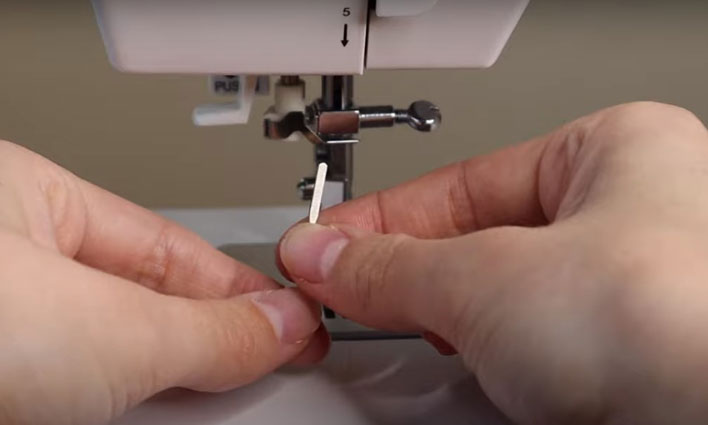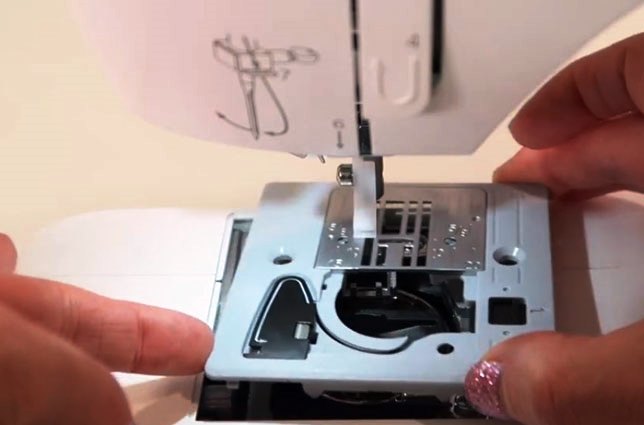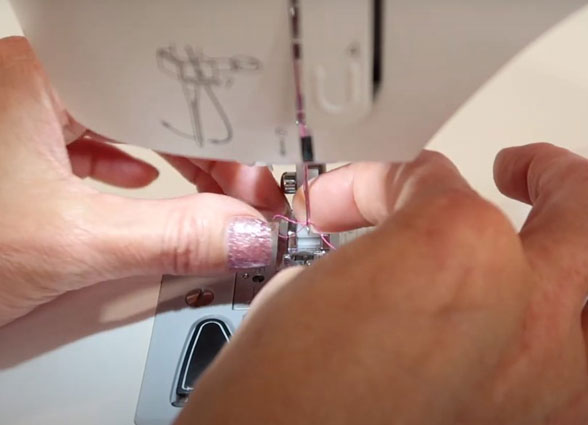Embarking on a journey with your Singer sewing machine means entering a world where every stitch and seam counts. But to ensure each one is perfect, a consistent rhythm of care and maintenance is crucial.
Navigating through the essentials of “How to Clean a Singer Sewing Machine” not only amplifies your machine’s longevity but also ensures your crafting adventures are always smooth and efficient. This guide walks you through detailed steps, from the initial dusting of the exterior to the intricate cleaning of the bobbin area, and onwards through troubleshooting common issues.
And remember, keeping your Singer machine sparkling and well-oiled is synonymous with keeping your sewing projects flawless and frustration-free. Let’s dive in, ensuring every stitch your machine produces is a testament to your diligent care and maintenance!
Importance of Regular Cleaning and Maintenance
Every stitch, every garment, and every crafted piece of fabric that travels under the diligent needle of a Singer sewing machine leaves behind minute traces. Flakes of dust, tiny fibers, and small bits of thread accumulate over time, hindering the smooth operation of your machine.
Regularly attending to the cleanliness of your sewing machine prevents a cascade of common issues, such as inconsistent stitches, needle jams, and gradual wearing down of movable parts.
Pre-Cleaning Preparation
Before we delve into the exact mechanics of “How to Clean Singer Sewing Machine”, it’s paramount to prioritize safety and efficacy. Begin by disconnecting your sewing machine from any power source.
Gather your cleaning essentials: soft brushes, sewing machine oil, a lint-free cloth, and a screwdriver, Prepare a well-lit and spacious area to proceed with the cleaning comfortably and meticulously. let’s add more details to each step…
Step-by-Step Guide: Cleaning a Singer Sewing Machine
Step 1: Cleaning the Outside
Step 2: Cleaning the Bobbin Area
Step 3: Cleaning Needle and Presser Foot Area
Step 4: Cleaning Thread Tension Discs
Step 5: Cleaning Feed Dogs and Stitch Plate
Step 6: Cleaning Thread Path and Take-up Lever
Step 7: Cleaning Spool Holder and Thread Guides
Step 8: Cleaning Bobbin Winder
Step 9: Cleaning Hand Wheel Area
Step 10: Cleaning Light and Lamp Cover
Step 11: Cleaning Machine’s Arm and Casing
Step 12: Cleaning Accessory Storage Area
Step 13: Checking Attachments and Extra Feet
With our guide points set, let’s delve into the details, ensuring your Singer sewing machine receives the thorough, tender-loving care it deserves, propelling it to stitch in its finest form.
Step 1: Cleaning the Outside
Ensuring the exterior of your Singer sewing machine is clean prevents dust and lint from moving inside the system. Here’s a detailed breakdown:
A. Wipe Down
- Soft Cloth: Employ a soft or microfiber cloth, gently wiping down the machine’s external surfaces to clear away dust and grime.
- Gentle Strokes: Use light, smooth strokes to avoid scratching or damaging the surface.
B. Detailed Brushing
- Soft Brush: Utilize a gentle brush – a makeup brush can work well.
- Crevices and Corners: Pay attention to areas like corners, around buttons, and small gaps where dust can accumulate.
- Gentle Brushing: Ensure your brushing is soft to prevent any damage to the machine’s exterior.
Step 2: Cleaning the Bobbin Area
Maintaining a clean bobbin area is crucial for smooth, uninterrupted sewing and preventing thread jams.
A. Removal of Bobbin and Case
- Bobbin Case: Take out the bobbin case by lifting the lever and pulling it out gently.
- Bobbin: Remove the bobbin from the case and set aside.
B. Brushing and Wiping
- Loosening Lint: With a small brush, carefully remove any accumulated lint from around the bobbin case area.
- Wipe Down: Using a lint-free cloth, gently wipe the area to clear away any loosened lint and dust.
C. Oiling
- Sewing Machine Oil: Use only sewing machine oil for lubrication.
- One Drop: One or two drops are usually sufficient – check your machine’s manual for specific guidance.
- Avoid Over-Oiling: Excessive oiling can attract more dust and lint.
Step 3: Cleaning Needle and Presser Foot Area
Ensuring the needle and presser foot area are clean guarantees precise stitches and avoids snagging of fabric.
A. Replacing the Needle
- Unscrew: Use the screwdriver that came with your Singer machine to loosen the needle clamp.
- Check: Inspect the old needle for any damage or dullness.
- New Needle: Insert a new needle, ensuring it’s pushed up as far as it will go, and then tighten the screw.
B. Cleaning Presser Foot
- Removal: Pop off the presser foot by lifting it and disengaging it from the machine.
- Clean: Use a cloth and brush to remove any lint or dust from the presser foot and its attachment area.
- Reattach: Ensure you securely reattach the presser foot before resuming sewing.
By practicing these steps with regularity and diligence, you’re investing in the ongoing performance and longevity of your Singer sewing machine. Always revert to your machine’s manual for any specific details or precautions related to your particular model.
Step 4: Cleaning Thread Tension Discs
A. Lifting the Presser Foot
- Release Tension: Raising the presser foot disengages the tension discs, allowing easier access for cleaning.
B. Cleaning Discs
- Thin Cloth Usage: Insert a thin, dry, and lint-free cloth between the discs.
- Gentle Slide: Move the cloth back and forth gently to absorb old oil and remove lint.
Step 5: Cleaning Feed Dogs and Stitch Plate
A. Removing the Stitch Plate
- Screwdriver: Utilize it to unscrew and remove the stitch plate gently.
B. Brushing and Tweezing
- Loosen Lint: Using a brush, softly loosen lint and thread bits.
- Tweezer Action: Employ tweezers to remove stubborn particles without forcing them.
Step 6: Cleaning Thread Path and Take-up Lever
A. Wiping and Brushing
- Navigating Path: Progress through the thread path, ensuring all areas, especially guides and levers, are clean.
B. Checking Thread Movement
- Manual Testing: Thread the machine and hand-turn the wheel to ensure smooth thread flow without snags.
Step 7: Cleaning Spool Holder and Thread Guides
A. Wiping for Cleanliness
- Ensuring Smoothness: Ensure threads move freely without encountering resistive snags from dust or lint.
B. Observing Thread Flow
- Functional Check: Look out for any rough spots or obstructions that might hinder the thread movement.
Step 8: Cleaning Bobbin Winder
A. Checking and Clearing
- Observation: Ensure no threads are entwined around the winder and that there’s no dust accumulation.
Step 9: Cleaning Hand Wheel Area
A. Wiping Externally
- Grime Removal: Employ a soft cloth to wipe away accumulated grime and dust from the handwheel.
B. Auditory Check
- Listening for Issues: Any sounds or resistance might necessitate further examination or lubrication.
Step 10: Cleaning Light and Lamp Cover
A. Ensuring Brightness
- Cold Bulb Cleaning: Only clean the bulb when it’s cool to the touch to avoid any risk.
Step 11: Cleaning Machine’s Arm and Casing
A. Wiping and Securing
- Preventive Measures: Ensure all screws are tight and that there’s no loosening, which can cause misalignment.
Step 12: Cleaning Accessory Storage Area
A. Emptying and Cleaning
- Organizational Replacing: Put back everything neatly, ensuring nothing is out of place or lost.
Step 13: Checking Attachments and Extra Feet
A. Ensuring Clarity
- Storage: Maintain them in a clean, dry area to prevent damage and ensure they’re always ready for use.
Remember: Safety first! Ensure your sewing machine is turned off and unplugged before you begin the cleaning process. Maintaining your Singer sewing machine’s cleanliness through these detailed steps ensures a long, efficient, and smooth-running life for your cherished crafting tool. And should any uncertainties or issues arise, seeking professional guidance is the best route to safeguard your machine.
Oiling the Singer Sewing Machine
A. Gather Your Supplies
- Oil: Use sewing machine oil, not any other kind of oil.
- Cloth: Have a soft, clean cloth ready to wipe any excess oil.
- Manual: Always have your Singer sewing machine manual handy for specific guidance.
B. Identify the Oil Points
- Consult the Manual: Find out exactly where to oil by checking the manual because different models may have unique oil points.
- Common Points: Usually, you need to oil the bobbin case area, shuttle hook, and needle bar.
C. Process of Oiling
- Remove Excess Dust: Before oiling, make sure the areas you will oil are clean and free from dust or lint.
- Applying the Oil: Add 1-2 drops of oil to each point identified for oiling.
- Wipe Away Excess: Use your cloth to carefully wipe away any extra oil from around the oil points.
- Avoid Over-Oiling: Ensure you do not over-apply, as too much oil can accumulate dust and dirt.
D. Run the Machine
- Absorb Excess Oil: Run the machine for a minute or two on some scrap fabric to help absorb any extra oil and prevent it from transferring to your next sewing project.
E. Regularity of Oiling
- Frequent Use: If you use your Singer machine often, consider oiling it after every few projects.
- Infrequent Use: If you sew now and then, oiling your machine every 3-6 months should suffice.
F. Storage
- Cover: After oiling, make sure to cover your machine when not in use to protect it from dust and lint.
- Keep Upright: Store the machine in an upright position to prevent oil from spreading to unwanted areas.
G. Additional Tips
- Oil Type: Only use oil intended for sewing machines to avoid damage.
- Temperature: Store the oil at room temperature and keep it away from direct sunlight.
By maintaining a consistent routine in oiling your Singer sewing machine, you’ll extend its life and ensure smoother, more reliable operation in all your sewing endeavors. Remember: always refer to your manual for any model-specific advice or instructions to avoid any mishaps.
Let’s explore the experiences of multiple users across different Singer sewing machine models:

1. User’s Experience: Case Study on Cleaning and Oiling a Singer Tradition 2277 Sewing Machine
Background: Mrs. Rachel Evans, a 43-year-old sewing enthusiast from Austin, Texas, noticed declining performance from her Singer Tradition 2277. She sought to improve its longevity and performance through cleaning and oiling.
Result: Post-maintenance, her Singer Tradition 2277 ran quieter, with even stitches and no jams, highlighting the importance of regular upkeep.
2. User’s Experience: Case Study on Cleaning and Oiling a Singer Quantum Stylist 9960 Sewing Machine
Background: Mr. David Moreno, a 35-year-old fashion designer from New York, encountered issues with his Singer Quantum Stylist 9960. Despite the machine’s array of features, its lack of maintenance was affecting the stitch quality.
Result: After a thorough cleaning and oiling session, David’s Singer Quantum Stylist 9960 restored its precise stitch quality and speed, re-emphasizing the machine’s value in his design projects.

3. User’s Experience: Case Study on Cleaning and Oiling a Singer Heavy Duty 4423 Sewing Machine
Background: Ms. Laura Kim, a 28-year-old DIY craftsperson from San Francisco, experienced delays in her crafting projects due to the sluggish performance of her Singer Heavy Duty 4423.
Result: A comprehensive cleaning and oiling regimen brought her Singer Heavy Duty 4423 back to peak performance, enabling Laura to tackle her projects with renewed vigor.

4. User’s Experience: Case Study on Cleaning and Oiling a Singer Start 1304 Sewing Machine
Background: Mr. Alex Thompson, a 50-year-old upholsterer from Chicago, uses his Singer Start 1304 for minor repairs. Lately, he felt the machine was not as efficient as it used to be.
Result: Alex’s cleaning and oiling intervention brought significant improvement to his Singer Start 1304. The machine now handles fabrics smoothly, saving Alex time on his upholstery repairs.

5. User’s Experience: Case Study on Cleaning and Oiling a Singer Simple 3232 Sewing Machine
Background: Ms. Sarah Lopez, a 40-year-old teacher from Miami, uses her Singer Simple 3232 for class projects. She noticed the machine struggled with multiple fabric layers.
Result: Post maintenance, Sarah’s Singer Simple 3232 breezed through multiple fabric layers. Sarah now recommends regular cleaning and oiling to her students.
Post-Cleaning Procedures and Setup
After giving your Singer sewing machine a thorough cleaning, it’s crucial to reassemble all components securely to guarantee optimal performance. A proactive approach is to perform a stitch test on some scrap fabric. This step ensures that the machine operates smoothly and that no issues have arisen from the cleaning process. To cap off your maintenance routine, shield your pristine machine with a cover. Not only does it keep the dust away, but it also extends the lifespan and efficiency of your cherished Singer machine.
Periodic and Professional Maintenance
Regular maintenance is pivotal for the longevity of your Singer sewing machine. Engaging a professional technician for an annual, in-depth inspection ensures your machine is calibrated and serviced to perfection. These expert check-ups, more than just routine servicing, act as preventive measures. They’re instrumental in identifying potential problems in their infancy, averting major issues down the line. Investing in regular professional maintenance safeguards your machine’s performance and your peace of mind.
Troubleshooting Common Issues
Navigating through common sewing machine issues? Here’s a smooth rundown to get your Singer machine back in tip-top shape:
- Skipped Stitches: Often, it’s about the needle. Check if it’s new, inserted correctly, and right for your fabric.
- Thread Jamming: It’s likely a threading mishap. Double-check the thread’s journey through the machine.
- Uneven Stitches: It’s all in the tension. Adjust to get those stitches just right—not too loose or too tight.
- Power Woes: Not turning on? A quick look at your power cable to ensure it’s snug and undamaged might be the fix.
- Fabric Not Moving: Those feed dogs need to be clean and in top shape to guide your fabric smoothly.
- A Noisy Machine: Hear that? It might be crying out for some oil. A little lubrication can quiet things down.
- Breaking Needles: Set them up right. Ensure they’re straight, sharp, and snug.
With these simple checks and tweaks, you’ll be back to seamless sewing in no time. After all, a happy machine means a happy seamstress!
Conclusion
In embracing the meticulous steps involved in cleaning and maintaining your Singer sewing machine, you not only preserve its functionality but also enhance its longevity. This prudent approach ensures that every sewing project is met with consistency, quality, and a machine operating at its optimal level.
May every piece you create be a testimony to the meticulous care and commitment you invest in your Singer sewing machine, ensuring it reciprocates with reliable, smooth, and efficient functionality through every stitch and seam.
FAQs: Cleaning and Oiling Singer Sewing Machines
- Can I use any oil for my Singer sewing machine?
No, it’s essential to use sewing machine oil. Other oils might not be refined enough and can leave residues, causing performance issues or even damage.
- Why is there a lot of lint under the stitch plate?
Lint typically accumulates from thread and fabric. Using high-quality thread can reduce lint. Regularly cleaning under the stitch plate helps keep this buildup in check.
- Why does my Singer sewing machine sound noisy even after oiling?
There could be several reasons. It might need a more thorough cleaning, the type of oil might not be appropriate, or there might be underlying mechanical issues. If cleaning and oiling don’t resolve the noise, it might be time to consult a professional.
- Is it necessary to replace the needle after cleaning?
It’s good practice to replace the needle after completing a big project or if it becomes dull, bent, or damaged. A fresh needle ensures optimal stitching quality.
- Can I clean and oil the machine myself, or should I always consult a professional?
Basic cleaning and oiling can certainly be done at home using the machine’s manual as a guide. However, for in-depth maintenance or if you encounter issues, consulting a professional is recommended.
- I lost my Singer sewing machine’s manual. How can I find cleaning and oiling instructions?
Most Singer sewing machine manuals are available online on Singer’s official website. Simply search for your model number, and you should find a digital copy of your manual.
- After oiling, there’s excess oil. What should I do?
Use a soft cloth to wipe away any excess oil. It’s also a good idea to sew on a scrap piece of fabric to absorb any extra oil before sewing on your main project.
- How can I ensure I’m oiling the right parts of my Singer sewing machine?
Your machine’s manual will provide detailed instructions. If you’re unsure, consult a professional or view tutorials specific to your Singer model.
- How can I ensure the longevity of my Singer sewing machine?
Regular cleaning and oiling, using high-quality thread, ensuring it’s stored in a dust-free environment, and getting it serviced professionally once a year can help ensure its longevity.
Remember, your sewing machine is an investment, and taking care of it will ensure it serves you well for years to come.
Photo Source: amazon.com, YouTube








